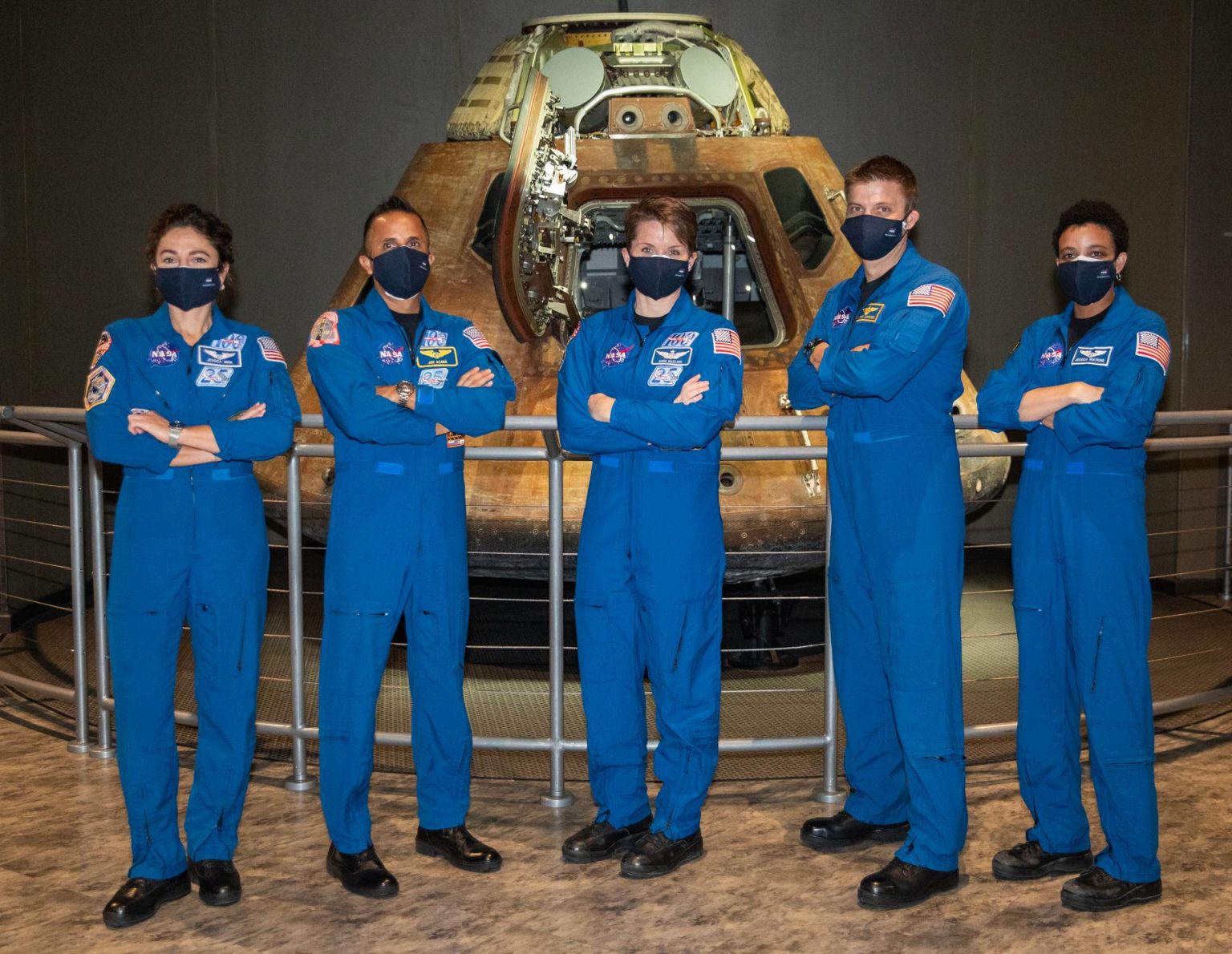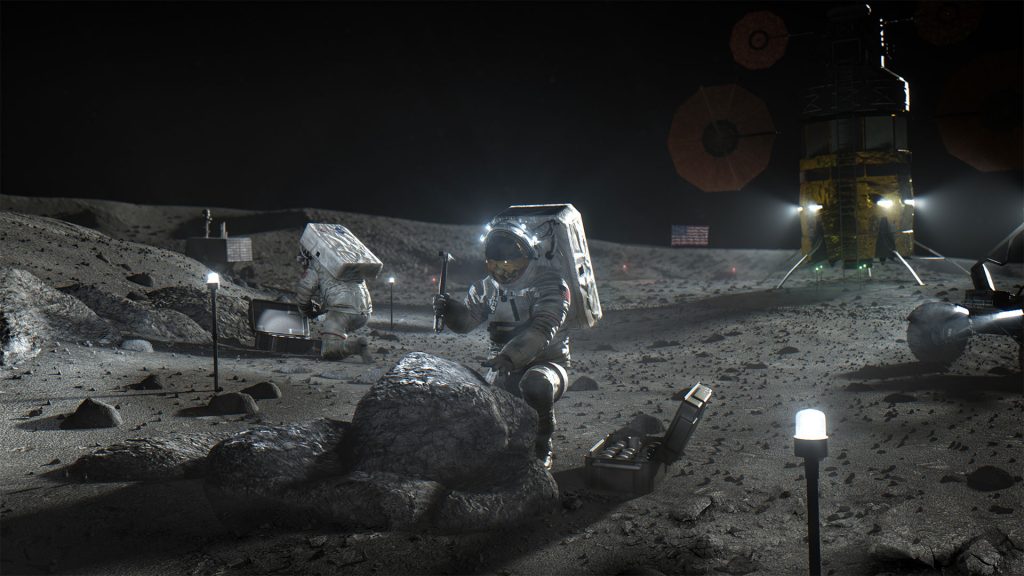With the Artemis program, NASA will land the first woman and next man on the Moon by 2024. It’s the next step towards sending astronauts to Mars.
 Recently, NASA announced the 18 men and women selected as astronauts for the Artemis program. The astronauts on the Artemis Team come from a diverse range of backgrounds, expertise, and experience — all in order to establish sustainable exploration by the end of the decade. NASA will announce flight assignments for astronauts later, and additional Artemis Team members, including international partner astronauts, will join the team as needed. The Artemis missions begin next year!
Recently, NASA announced the 18 men and women selected as astronauts for the Artemis program. The astronauts on the Artemis Team come from a diverse range of backgrounds, expertise, and experience — all in order to establish sustainable exploration by the end of the decade. NASA will announce flight assignments for astronauts later, and additional Artemis Team members, including international partner astronauts, will join the team as needed. The Artemis missions begin next year!
Meet The Team
The astronauts of the Artemis Team will help NASA prepare for the coming Artemis missions, and also will engage the public and industry on the Artemis program and NASA’s exploration plans. The Artemis Team members are:
Joseph Acaba was selected as a NASA astronaut in 2004. He has spent 306 days in space and performed three spacewalks. The Anaheim, California, native holds a bachelor’s degree in geology, as well as master’s degrees in geology and education. Before coming to NASA, he taught high school science and middle school math and science.
Kayla Barron was chosen as an astronaut in 2017. Originally from Richland, Washington, she earned a bachelor’s degree in systems engineering and a master’s degree in nuclear engineering. As a submarine warfare officer, Barron was a member of the first class of women commissioned into the submarine community. She is a lieutenant commander in the U.S. Navy.
Raja Chari joined the astronaut corps in 2017. A colonel in the U.S. Air Force, he was raised in Cedar Falls, Iowa. He received a bachelor’s degree in astronautical engineering and a master’s degree in aeronautics and astronautics. The U.S. Naval Test Pilot School graduate worked on F-15E upgrades and then the F-35 development program, before coming to NASA.
Matthew Dominick was chosen as an astronaut in 2017. Born in Wheat Ridge, Colorado, he holds a bachelor’s degree in electrical engineering and a master’s degree in systems engineering. He also graduated from the U.S. Naval Test Pilot School and was a developmental test pilot specializing in aircraft carrier launches and landings before coming to NASA.
Victor Glover was selected as an astronaut in 2013. The Pomona, California, native and U.S. Navy Commander earned a bachelor’s degree in general engineering and master’s degrees in flight test engineering, systems engineering, and military operational art and science. He piloted the Crew-1 Dragon Resilience and is currently serving as an Expedition 64 flight engineer aboard the International Space Station.
Warren Hoburg joined the astronaut corps in 2017. A native of Pittsburgh, Pennsylvania, he holds a bachelor’s degree in aeronautics and astronautics, and a doctorate in electrical engineering and computer science. Before coming to NASA, he was an assistant professor at Massachusetts Institute of Technology and a seasonal member of the Yosemite Search and Rescue team.
Jonny Kim came to NASA as part of the 2017 astronaut class. The Los Angeles, California, native enlisted in the U.S. Navy following high school. He became a Navy SEAL before earning his commission and going back to school to pursue a bachelor’s degree in mathematics, followed by a doctor of medicine.
Christina Hammock Koch was selected as an astronaut in 2013 and holds the record for longest single spaceflight by a woman, with 328 days in space and six spacewalks. She grew up in Jacksonville, North Carolina, and received bachelor’s degrees in electrical engineering and physics, and a master’s degree in electrical engineering.
Kjell Lindgren was chosen as an astronaut in 2009. He spent 141 days in space and performed two spacewalks. Born in Taipei, Taiwan, he holds a bachelor’s degree in biology, a master’s degree in cardiovascular physiology and a doctor of medicine. Before becoming an astronaut, he was a flight surgeon supporting space shuttle and space station missions.
Nicole A. Mann joined the astronaut corps in 2013 and is currently training as pilot for the Crew Flight Test of Boeing’s CST-100 Starliner. Born in Petaluma, California, she earned bachelor’s and master’s degrees in mechanical engineering. The U.S. Marine Corps lieutenant colonel was an F/A-18 fighter pilot and graduate from the U.S. Naval Test Pilot School.
Anne McClain, from Spokane, Washington, joined the astronaut corps in 2013. She has spent 204 days in space and conducted two spacewalks. The U.S. Army lieutenant colonel is a Senior Army Aviator and graduated from the U.S. Naval Test Pilot School as a helicopter test pilot. She holds a bachelor’s degree in mechanical/aeronautical engineering, and master’s degrees in aerospace engineering and international relations.
Jessica Meir was chosen as an astronaut in 2013. She has spent 205 days in space and performed three spacewalks. A native of Caribou, Maine, she earned a bachelor’s degree in biology, a master’s degree in space studies, and a doctorate in marine biology. Before coming to NASA, she studied the physiology of animals in extreme environments.
Jasmin Moghbeli joined the astronaut corps in 2017. A major in the U.S. Marine Corps, she was raised in Baldwin, New York. She received both bachelor’s and master’s degrees in aerospace engineering. She also graduated from the U.S. Naval Test Pilot School and tested H-1 helicopters before she came to NASA.
Kate Rubins was chosen as an astronaut in 2009 and is currently orbiting Earth on her second flight aboard the International Space Station. She was raised in Napa, California, and holds a bachelor’s degree in molecular biology and a doctorate in cancer biology. She was the first person to sequence DNA in space and has performed two spacewalks.
Frank Rubio was selected as part of the 2017 astronaut class. The U.S. Army lieutenant colonel considers Miami, Florida, his hometown. He earned a bachelor’s degree in international relations and a doctor of medicine. He served as both a Blackhawk helicopter pilot and a flight surgeon in the Army before coming to NASA.
Scott Tingle came to NASA to join the 2009 astronaut class. The U.S. Navy captain has spent 168 days in space and performed one spacewalk. He considers Randolph, Massachusetts, his hometown and holds bachelor’s and master’s degrees in mechanical engineering. He also graduated from the U.S. Navy Test Pilot School.
Jessica Watkins joined the astronaut corps in 2017. The Lafayette, Colorado, native received a bachelor’s degree in geological and environmental sciences, and a doctorate in geology. Before becoming an astronaut, she was a postdoctoral fellow at the California Institute of Technology, where she served as a member of the science team for the Mars Science Laboratory rover, Curiosity.
Stephanie Wilson was chosen as an astronaut in 1996. A veteran of three space shuttle flights, she has spent 42 days in space. She was born in Boston, Massachusetts, and earned a bachelor’s degree in engineering science and a master’s degree in aerospace engineering. Before becoming an astronaut, she worked on the Galileo spacecraft at NASA’s Jet Propulsion Laboratory.
The Artemis Program
Using innovative technologies to explore more of the lunar surface than ever before, these missions are critical to the space economy, fueling new industries and technologies, supporting job growth, and furthering the demand for a highly skilled workforce. (Learn more from NASA’s Lunar Exploration Overview.)
Through a variety of upcoming robotic and human activities on the surface and in orbit around the Moon, we will better understand the universe and our home planet.









